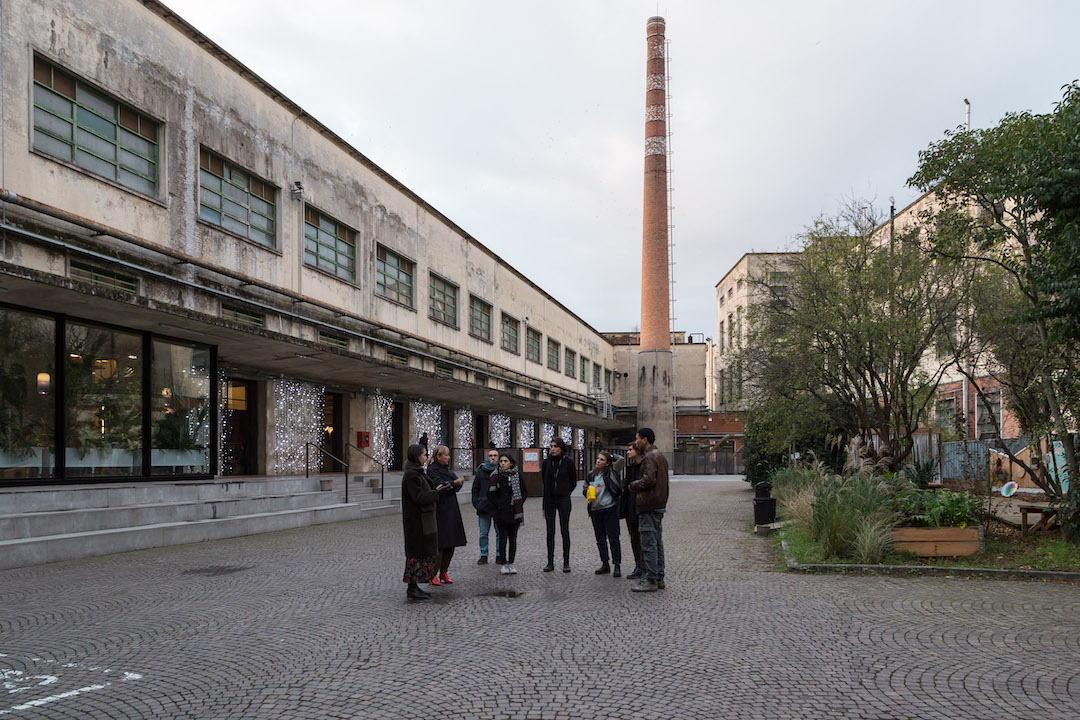Workshop with Goldschmied & Chiari
WORKSHOP with GOLDSCHMIED & CHIARI
Objects in the rear-view mirror are closer than they appear
Six identical mirrors, 70×115 centimetres, one theme, the self-portrait. An object and a subject, both fundamental to the work of Goldschmied & Chiari, which they used as a fuse to set off their work with the six artists in residence.
The experiment was set up to provide intentionally unexpected results, and in doing so left space free to accommodate each artist’s own reflections and needs.
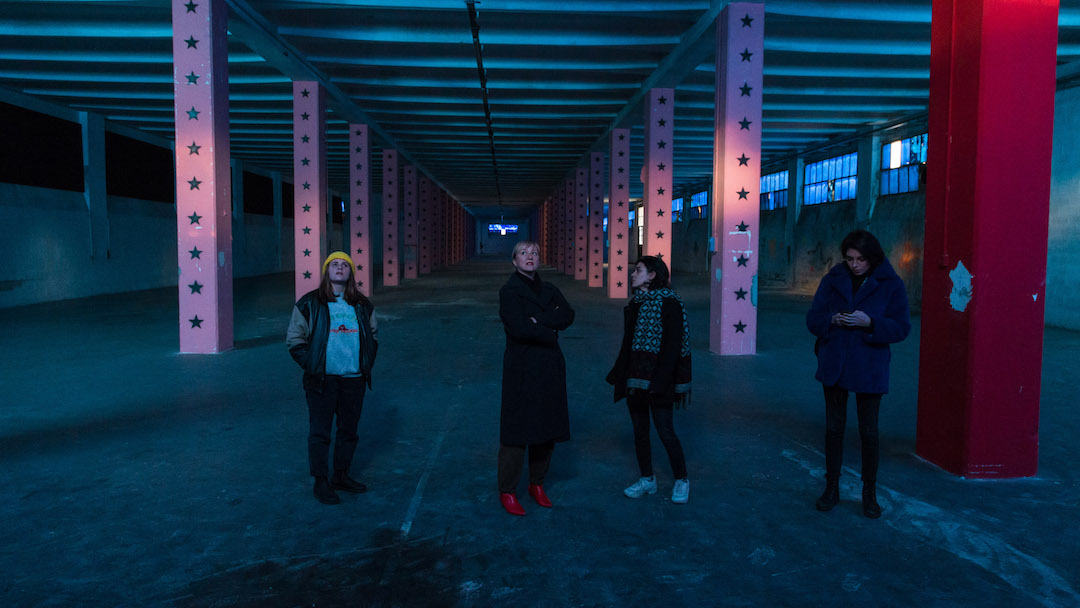
“What interested us, and something we were careful with, was not to deliver some pre-planned project, because we knew we would meet and work with young artists who are already working on their own projects“.
Goldschmied & Chiari borrowed a line that is written on the rear-view mirrors of American cars, “objects in the rear-view mirror are closer than they appear”, and asked the resident artists to use the mirror as the basis of their work. Interested in the multiplicity of perspectives and reflections, they chose the self-portrait as the starting point in the process. Although it is of noted importance in the history of art, in recent years self-portraits have been going through a new phase, and the workshop wanted to look again at this approach, looking for answers and coming up with new questions.
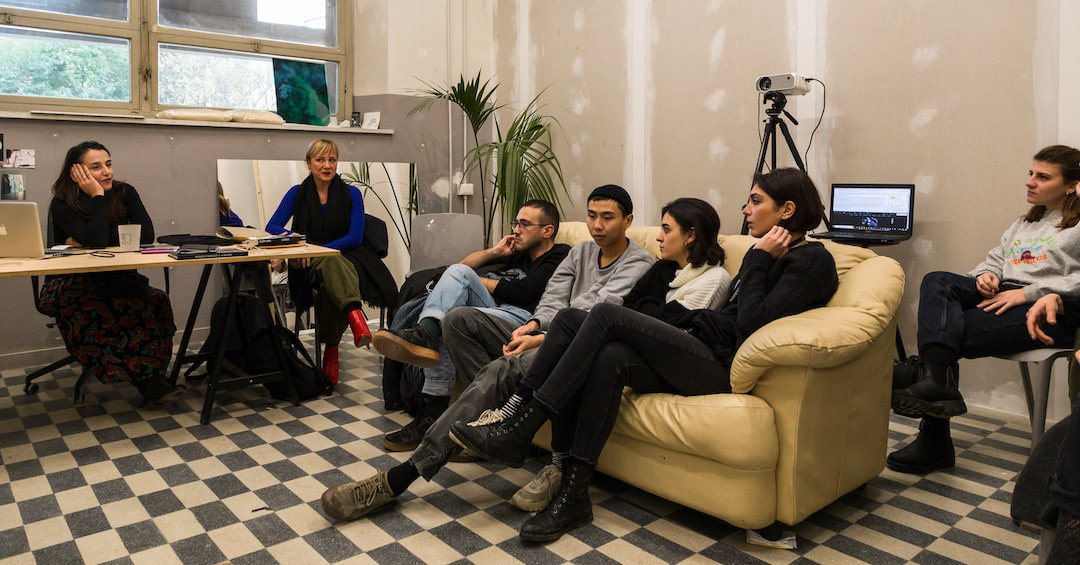
It was quite clear right from the beginning that the mirror did not necessarily have to be the definitive medium, it could also act as an extremely versatile instrument, one with its own performative side.
As a material, it is a recurring feature in the artistic duo’s research. In their first communal work, created in 2001 at the Fondazione Olivetti, a mirror reflected their draped bodies and, above this, written in light white powder was their original name: goldiechiari.
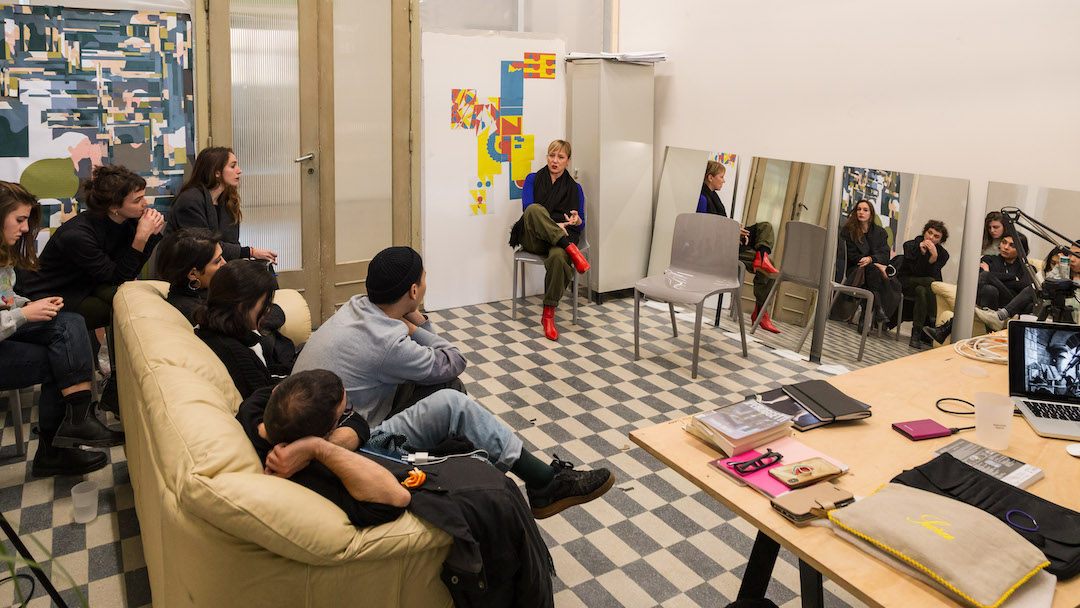
In doubling the space and the vision, the mirror doesn’t just allow different individuals to relate to each other, it also allows them to relate to their own individuality and their own research, therefore allowing them to work on their own self-portrait. That same body emerges as a means of relating to their own cultural and natural positioning, which determines they way they look at others and themselves. In this sense, the visits that Goldschmied & Chiari paid to each of the artists’ studios were a type of self-portrait.
From this concentration of histories and works, the two artists identified a common theme, time. “They all have a way of returning to their childhood, which somehow also becomes a type of sensuality. It is a nucleus that unites them, one of the family, of the past, of time“. As such, in different forms, from the frailty of work to the images drawn from childhood, time emerged as a subtle thread running through the six individual projects. Moreover, the 21st century is the century of time. The work of Goldschmied & Chiari also plays around with temporal shifts, playing with the past in ‘Genealogie’, and with the future in ‘If I am the legend’, revealing and highlighting current tensions.
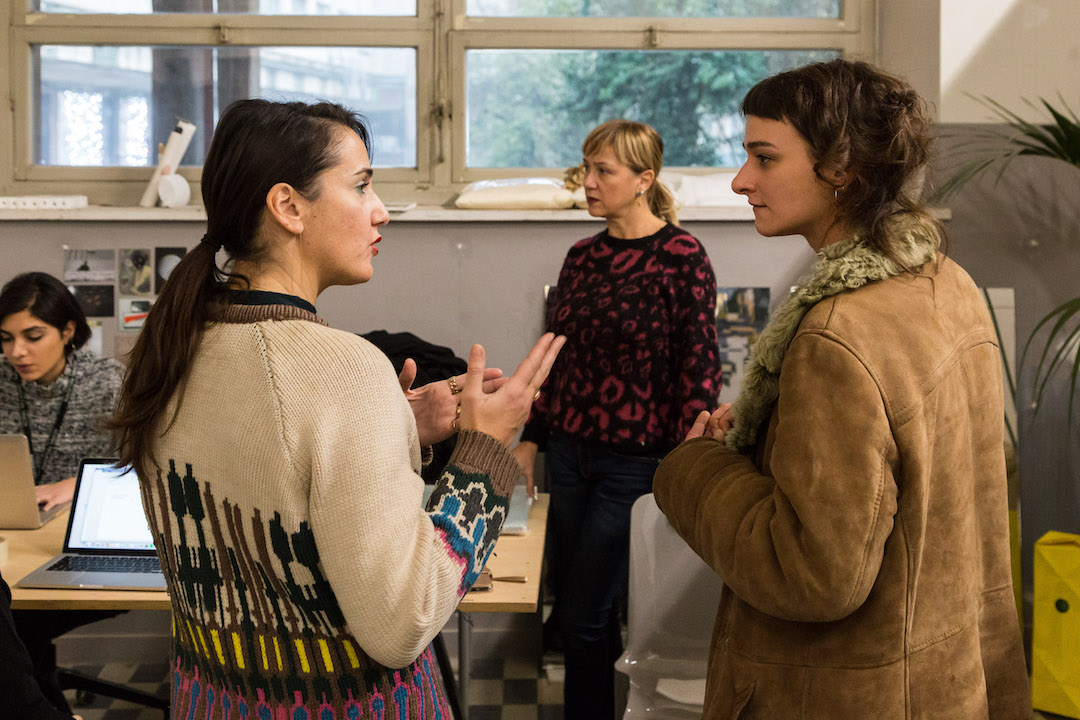
Taking the self-portrait as a starting point and using the mirror as a performative medium, time became the synthesis of the work and found its shape in an element of the former Manifattura Tabacchi that is still present today: the windows that were painted blue. When the factory was still active, blue paint was used on the windows to protect the tobacco from being dried out by the sun’s rays, and in the workshop, this took on a more pictorial character.
Specifically, the six artists will paint six windows, each in total freedom, which will then be placed in the courtyard at the Manifattura. One task, six different approaches. On one side these windows will amplify the vision of each artist, whilst on the other they will represent a sign that crosses through time, traces from the past leaving their mark on the future. Not only that, the windows are also positioned as a conceptual bridge between two spaces with different vocations: the exterior visible to the public – the courtyard – and the hidden interior of the old buildings, which the work references in a simple and immediate way.
Memory, removal, the relationship with history, self-portrait, unanimity, impermanence, time; the work encompasses of all this and, as an integral part of the architecture, it also contains the key to its continuous movement and change.
